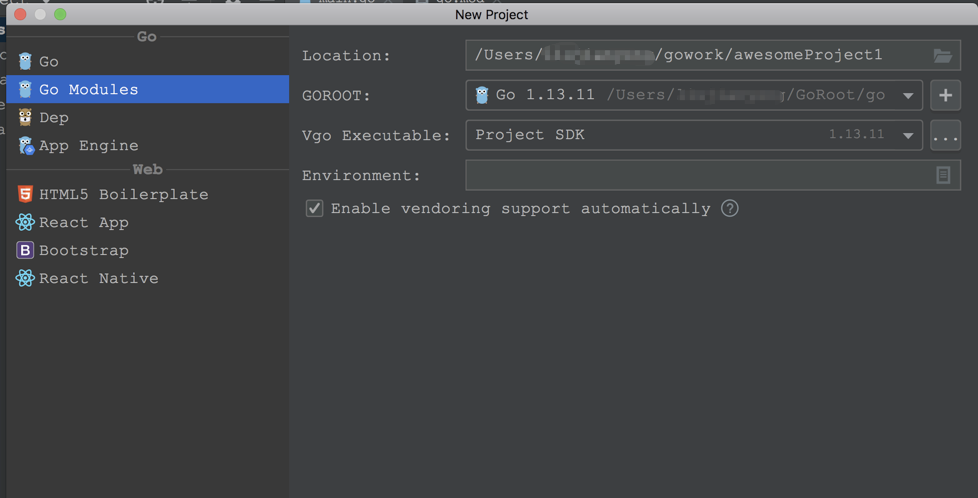A module version is defined by a tree of source files, with a go.mod file in its root. When the go command is run, it looks in the current directory and then successive parent directories to find the go.mod marking the root of the main (current) module.
The go.mod file itself is line-oriented, with // comments but no /* */ comments. Each line holds a single directive, made up of a verb followed by arguments. For example:
module my/thing
require other/thing v1.0.2
require new/thing v2.3.4
exclude old/thing v1.2.3
replace bad/thing v1.4.5 => good/thing v1.4.5
The verbs are module, to define the module path; require, to require a particular module at a given version or later; exclude, to exclude a particular module version from use; and replace, to replace a module version with a different module version. Exclude and replace apply only in the main module's go.mod and are ignored in dependencies. See https://research.swtch.com/vgo-mvs for details.
The leading verb can be factored out of adjacent lines to create a block, like in Go imports:
require (
new/thing v2.3.4
old/thing v1.2.3
)
The go.mod file is designed both to be edited directly and to be easily updated by tools. The 'go mod edit' command can be used to parse and edit the go.mod file from programs and tools. See 'go help mod edit'.
The go command automatically updates go.mod each time it uses the module graph, to make sure go.mod always accurately reflects reality and is properly formatted. For example, consider this go.mod file:
module M
require (
A v1
B v1.0.0
C v1.0.0
D v1.2.3
E dev
)
exclude D v1.2.3
The update rewrites non-canonical version identifiers to semver form, so A's v1 becomes v1.0.0 and E's dev becomes the pseudo-version for the latest commit on the dev branch, perhaps v0.0.0-20180523231146-b3f5c0f6e5f1.
The update modifies requirements to respect exclusions, so the requirement on the excluded D v1.2.3 is updated to use the next available version of D, perhaps D v1.2.4 or D v1.3.0.
The update removes redundant or misleading requirements. For example, if A v1.0.0 itself requires B v1.2.0 and C v1.0.0, then go.mod's requirement of B v1.0.0 is misleading (superseded by A's need for v1.2.0), and its requirement of C v1.0.0 is redundant (implied by A's need for the same version), so both will be removed. If module M contains packages that directly import packages from B or C, then the requirements will be kept but updated to the actual versions being used.
Finally, the update reformats the go.mod in a canonical formatting, so that future mechanical changes will result in minimal diffs.
Because the module graph defines the meaning of import statements, any commands that load packages also use and therefore update go.mod, including go build, go get, go install, go list, go test, go mod graph, go mod tidy, and go mod why.














